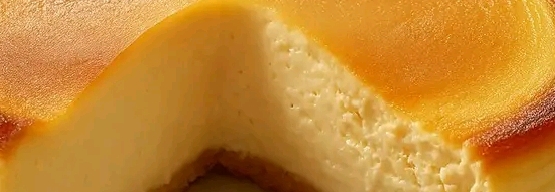Introduction
Cheesecake is a timeless dessert loved for its smooth, rich texture and irresistible flavor. Whether topped with fruit, chocolate, or enjoyed plain, this dessert has earned its place as a favorite around the world. The traditional version features a buttery crust and a creamy filling made with cream cheese — simple, yet unforgettable.
A Brief History
Did you know cheesecake dates back to ancient Greece? It was even served to athletes during the first Olympic Games in 776 BC! The Romans spread it across Europe, and centuries later, Americans gave it a new twist with the invention of cream cheese, creating the modern version we know and love today.
Ingredients
For the crust:
- 2 cups (200g) graham cracker or digestive biscuit crumbs
- 1/2 cup (115g) melted butter
- 2 tbsp sugar (optional)
For the filling:
- 2 lbs (900g) cream cheese, softened
- 1 cup (200g) sugar
- 1 tsp vanilla extract
- 3 large eggs
- 1 cup (240ml) sour cream or heavy cream
- 1 tbsp lemon juice (optional)
Toppings (optional):
- Fresh berries (strawberries, blueberries, raspberries)
- Fruit compote or jam
- Caramel sauce or chocolate ganache
How to Make Cheesecake
Step 1: Make the Crust
- Preheat your oven to 325°F (163°C).
- Combine the crumbs, melted butter, and sugar in a bowl.
- Press the mixture into the base of a springform pan.
- Bake for 10 minutes, then let it cool.
Step 2: Prepare the Filling
- Beat the cream cheese until smooth.
- Add sugar and vanilla extract and mix until fully combined.
- Beat in the eggs one at a time.
- Stir in the sour cream or heavy cream and lemon juice if using.
Step 3: Bake
- Pour the filling over the crust.
- Place the springform pan inside a larger baking dish filled with hot water (this water bath helps prevent cracks).
- Bake for 50–60 minutes. The center should still jiggle slightly.
- Turn off the oven and leave the cheesecake inside with the door slightly open to cool slowly.
Step 4: Chill and Serve
- Refrigerate for at least 4 hours, ideally overnight.
- Add your favorite toppings before serving.
Cheesecake Baking Styles
- Traditional Baked Cheesecake – Soft and creamy, often baked in a water bath.
- No-Bake Cheesecake – Set in the fridge using whipped cream or gelatin.
- Basque Cheesecake – Baked at a high temp for a burnt top and soft interior.
Surprising Health Benefits (Yes, Really!)
- Rich in Calcium – Supports bone health.
- Protein-Packed – Especially if made with Greek yogurt or ricotta.
- Energy Boost – High in fats and carbs.
- Mood Enhancer – Sugar and fats can trigger feel-good brain chemicals.
- Customizable – Healthier swaps like almond flour, honey, or low-fat dairy are possible.
Nutritional Snapshot (Per Slice)
- Calories: 350–450
- Protein: 6–8g
- Fat: 25–30g
- Carbs: 30–40g
- Sugar: 20–25g
Note: Values vary depending on the recipe and serving size.
Make It Healthier
- Use Greek yogurt or low-fat cream cheese.
- Replace sugar with stevia or honey.
- Try a crust made from oats or almond flour.
- Reduce portion size — a little goes a long way!
Global Cheesecake Variations
- New York Style – Rich, dense, and ultra-creamy.
- Japanese Cheesecake – Airy and fluffy, like a sponge cake.
- Italian Cheesecake – Made with ricotta for a lighter, slightly grainy texture.
- German Käsekuchen – Uses quark cheese and has a lighter body.
Conclusion
Cheesecake isn’t just dessert — it’s a celebration. Whether you love it classic or with a twist, baked or chilled, there’s a version out there for every taste. Just don’t forget: a slice is plenty… unless you’re sharing!
